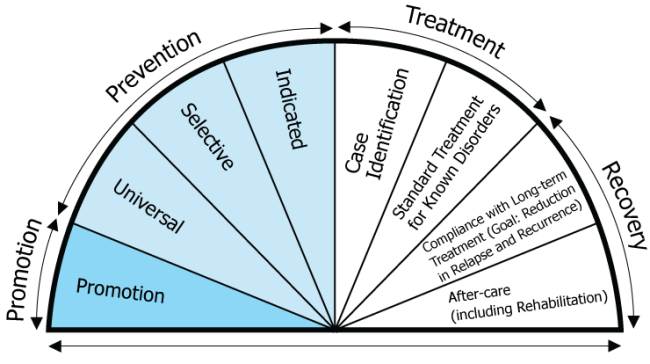There is a story that is frequently used to illustrate what prevention is and what it is not.
Susan and Fernando are fishing on a river when they see a man in the water! He is struggling to stay afloat, so Fernando drops his fishing pole and pulls the man out of the water. The man is sputtering and cold, and Susan calls an ambulance to take the person to a hospital. Susan and Fernando go back to fishing. Pretty soon they look up river again and see a woman in the water! She is struggling, too, so Fernando drops his fishing pole again and pulls the woman out of the water. Susan calls another ambulance to take her to a hospital.
The friends return to fishing when they look up river and see a whole group of people in the water! They are struggling to stay afloat. Fernando drops his fishing pole and starts hauling people out of the water. He looks up and sees Susan walking away. He calls to her to come help pull these people out of the river, and Susan responds that she is going up river to find out why all the people are ending up in the water.
What prevention is
Prevention services and strategies “go up river” to find out what contributes to people misusing substances and needing treatment services. In this analogy, we want to know exactly what is causing people to fall into this river. Perhaps Susan goes upstream and finds a fence built to keep people away from the river has fallen and needs to be rebuilt. Or, Susan finds a slippery slope running into the river and can plant vegetation on the slope to prevent people from falling into the river. In prevention work, we want to find out what is causing youth to use substances in our community, and then we work to reduce those risks and to build protection against substance misuse.
In other words, substance use prevention is evidence-based actions taken to delay the initial use of alcohol, tobacco, and other drugs, and to prevent substance misuse in order to promote health behaviors. In Washington, our prevention work is guided by the Substance Abuse and Mental Health Administration's Strategic Prevention Framework, which includes five cyclical phases – assessment, capacity, planning, implementation, and evaluation – guided by sustainability and cultural competency. To learn more about prevention frameworks, strategies, and processes, view the "What is substance use prevention?" fact sheet.
What prevention is not
Once people have developed problems with substance misuse, they are more appropriately candidates for treatment services than they are prevention.
Institute of Medicine Continuum of Human Service

Mental health promotion interventions
Usually targeted to the general public or a whole population. Interventions aim to enhance individuals’ ability to achieve developmentally appropriate tasks (competence) and a positive sense of self-esteem, mastery, well-being, and social inclusion, and strengthen their ability to cope with adversity.
Universal prevention
Targeted to the general public or a whole population that has not been identified on the basis of individual risk. The intervention is desirable for everyone in that group. Universal interventions have advantages when their costs per individual are low, the intervention is effective and acceptable to the population, and there is a low risk from the intervention.
Selective prevention
Targeted to individuals or a population subgroup whose risk of developing mental disorders is significantly higher than average. The risk may be imminent or it may be a lifetime risk. Risk groups may be identified on the basis of biological, psychological, or social risk factors that are known to be associated with the onset of a mental, emotional, or behavioral disorder. Selective interventions are most appropriate if their cost is moderate and if the risk of negative effects is minimal or nonexistent.
Indicated prevention
Targeted to high-risk individuals who are identified as having minimal but detectable signs or symptoms foreshadowing mental, emotional, or behavioral disorder, or biological markers indicating predisposition for such a disorder, but who do not meet diagnostic levels at the current time. Indicated interventions might be reasonable even if intervention costs are high and even if the intervention entails some risk.

